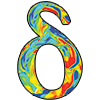SpaceClaim Training Course — Ep 01
Session 9
- Episode
- 01
- Run Time
- 13m 25s
- Published
- Oct 15, 2025
- Topic
- SpaceClaim
- Course Progress
- 0%
1. Overview
In this ANSYS SpaceClaim course session, we’ll revisit some of the most critical commands we’ve previously learned, including Move, Combine, Split, and Pull. We’ll accomplish this by constructing a 3D model of a pipe according to specified dimensions. This exercise will help you comprehend and learn more effectively through practical application. Throughout the process, we’ll also strengthen our modeling capabilities and develop a deeper understanding of how these tools can be employed together in real-world design tasks.
2. Learning Goals
The primary objective of this session is to practice and consolidate the use of fundamental modeling commands within ANSYS SpaceClaim. We aim to enhance our comprehension of how to modify, combine, and manipulate 3D geometries effectively. Another goal is to improve precision and consistency while modeling a 3D pipe structure based on specified dimensions.
3. Methodology
To commence, we’ll begin by sketching the base profile of the pipe according to the given dimensions. Subsequently, using the Pull command, we’ll extrude the base sketch to generate the main body of the pipe. The Combine command will be employed to merge distinct sections, while Split will assist us in dividing or trimming features where necessary. The Move command will also be utilized to reposition parts of the geometry to their proper locations. Each step will be executed carefully to ensure the model is both precise and well-organized.
4. Session Summary
In this session, we successfully reviewed and practiced the application of fundamental commands in ANSYS SpaceClaim by modeling a 3D pipe. The practical approach facilitated easier understanding of how different tools interact throughout the design process. This activity enhanced both our technical modeling proficiency and our familiarity with key SpaceClaim functions, preparing us for more sophisticated modeling tasks in subsequent sessions.

